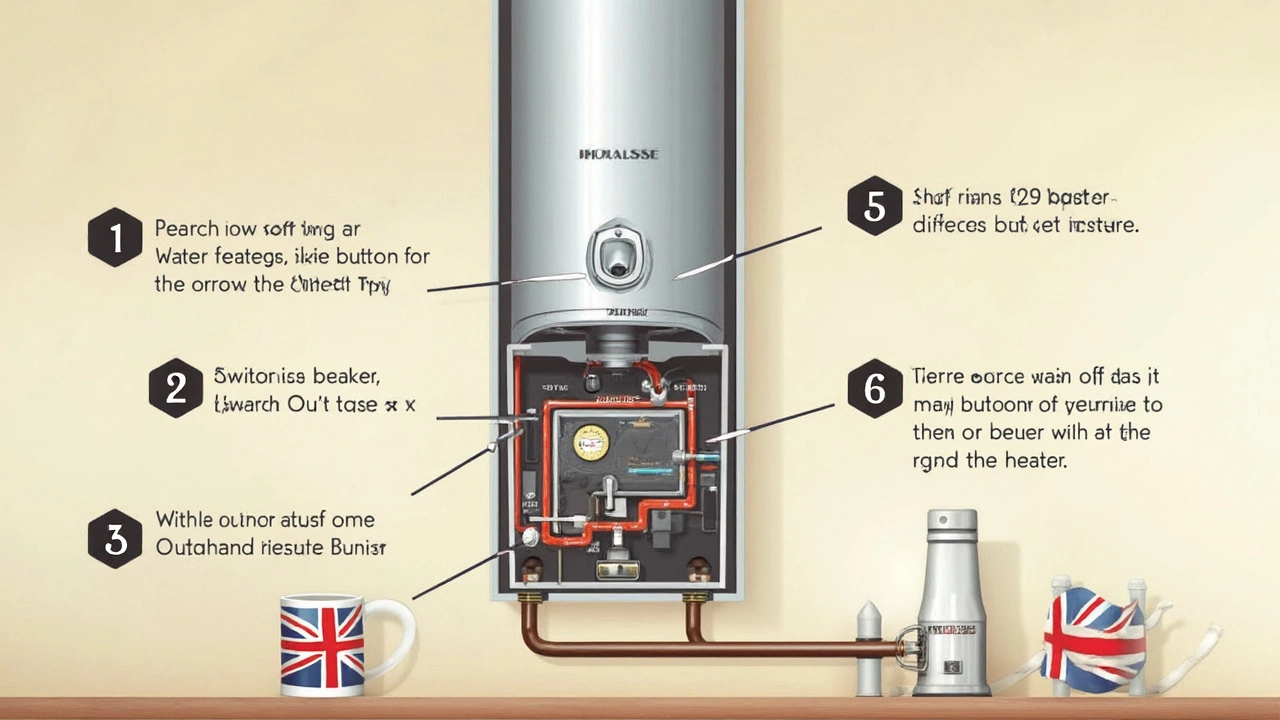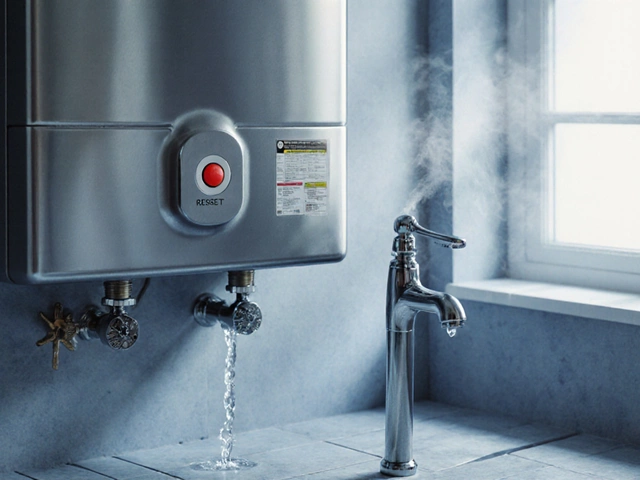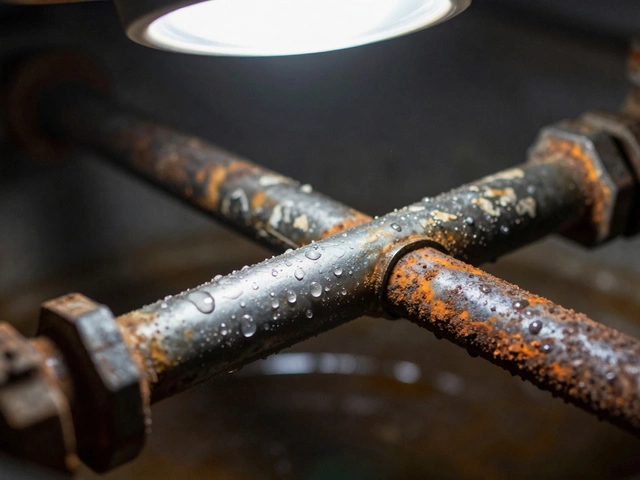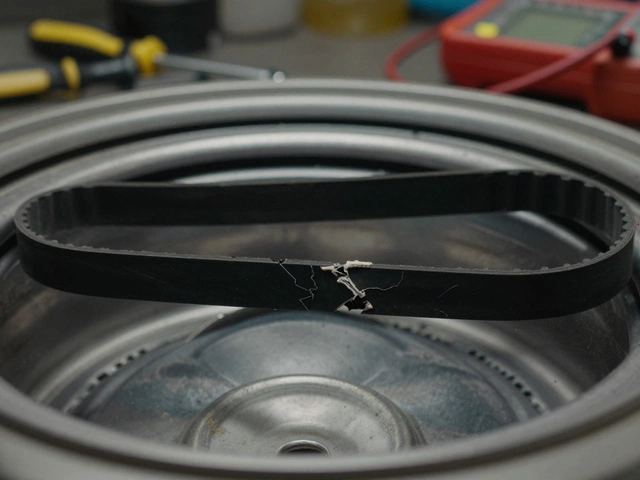Ever found yourself stuck with a cold shower and your water heater just isn’t doing its job? Resetting it seems simple, but one thing trips up a lot of folks: do you really need to turn off the breaker first? Getting this wrong isn’t just about a little zap – the risk of electrical shock or causing more damage is real.
The short answer: yes, you really should flip the breaker off before you touch that little red reset button. Water heaters run on 240 volts – not something you want to mess with casually. Even if you think you’re just pressing a button, one slip or a damp finger and you could have a nasty surprise. Taking this extra step only eats up a few seconds and keeps things safe. Plus, if something’s wrong with the heater’s wiring or reset switch, skipping the breaker could make it worse.
- Why You Might Need to Reset Your Water Heater
- The Simple Science: Breaker or No Breaker?
- How to Safely Reset Your Water Heater Step-by-Step
- What Can Go Wrong (And How to Fix It)
- When It’s Time to Call a Pro
Why You Might Need to Reset Your Water Heater
If your water turns cold and you’re left scratching your head, odds are your heater’s safety mechanism tripped and needs a reset. Pretty common, especially in older or hard-working heaters. The reset button is like your water heater’s panic button. It pops out if the tank gets too hot or there’s an electrical issue, cutting the power so things don’t get dangerous.
You might run into these problems:
- Thermostat failure—the most frequent culprit. When the thermostat stops reading temperatures right, the water overheats, and the reset button trips to keep things safe.
- Power surge—after a big electrical storm or if the house wiring is a bit sketchy, the surge can trip the water heater’s reset just like it trips breakers elsewhere.
- Heating element burnout—a busted heating coil can mess up the system and force your reset to protect the unit.
- Loose wiring—vibrations and age can make connections inside your water heater less reliable. Safety systems will cut power at the first sign of trouble.
- Constant hot water use—sometimes, overuse causes the system to overheat, especially in households with a lot of long, hot showers.
"When a water heater’s reset trips repeatedly, it’s not something to just ignore or keep pressing. That’s a real sign something’s wrong – from faulty heating elements to wiring or thermostat failure," says John Minyard, a master plumber with decades in residential repairs.
Here’s a quick look at what trips a water heater reset:
| Cause | Frequency | Safety Impact |
|---|---|---|
| Thermostat Failure | Very Common | High |
| Power Surge | Common | Medium |
| Element Burnout | Less Common | High |
| Loose Wiring | Occasional | High |
Any time the reset water heater button pops out, it deserves a closer look before you just push it back in. The reset keeps you and your house safe, and skipping over its signals can cost you more than just a cold shower.
The Simple Science: Breaker or No Breaker?
All home water heaters (electric types, anyway) run off your main electrical system. That box in your garage or basement — the electrical panel — controls it through a breaker. The breaker is like a power gate, and when you're dealing with electricity, especially 240 volts, safety always comes first.
Let’s break it down: the reset button on your water heater is not a magic on/off switch. It’s meant for safety, shutting off power inside the heater when something overheats, usually because a thermostat fails or sediment builds up. But pressing the reset button doesn't disconnect the unit from the main electrical supply. If you reset while power is live, there's still current running. That’s risky.
Why do pros always cut power at the breaker? Because wiring inside the access panel is always hot if the breaker is on. That, plus water and a metal tank, is a bad mix for accidental shocks. The Consumer Product Safety Commission has reported over 500 water heater-related electrocutions since 1990. The National Electrical Code even recommends disconnecting power from all high-voltage appliances before servicing. So flipping the breaker isn't just a suggestion. It's basic safety.
Here’s a quick breakdown so it’s easy to see why you should always turn off the breaker:
- No risk of electric shock if you accidentally touch a wire.
- Prevents damaging any electronic parts inside the heater.
- Avoids tripping breakers or blowing fuses in the house.
- Keeps you in line with code and warranty requirements.
Check this comparison of what happens with or without turning off the breaker:
| Action | Breaker ON | Breaker OFF |
|---|---|---|
| Reset With Live Power | Shock/explosion risk, void warranty | Safe, no current flowing |
| Reset With Wet Hands | High danger | No risk |
| Wiring Check | Possible injury | Safe to inspect |
The bottom line: There’s really no good reason to skip flipping the breaker. That click keeps you safe and saves you from a heap of hassle. Flipping it back on? Takes two seconds once you're done.
And if you’re thinking it’s all a fuss for nothing, just know this: doing it right is one of the most important steps in any reset water heater routine.

How to Safely Reset Your Water Heater Step-by-Step
Trying to reset a water heater shouldn’t feel like rocket science, but you do want to follow the right steps so you don’t get hurt—or fry your unit.
Most electric water heaters have their reset button under a metal panel, usually near the thermostat. That means you’ll need a screwdriver. It’s quick work, and it makes a big difference if you do it right.
- Turn off the breaker: This is the main rule. Head to your electrical panel and flip the breaker that controls your water heater. Most heaters use a double-pole 30-amp breaker, which you can usually spot because it’s labeled clearly. This protects you from the 240 volts running through the system.
- Wait a minute: Just give it a few seconds for any charge to clear out. This isn’t overkill—your safety matters.
- Remove the access panel: Look for the panel near the top of your heater (sometimes there are two panels; check the upper one first). Use a screwdriver to get it open.
- Peel back insulation: There’s usually a little bit of foam or fiberglass insulation under the panel. Gently move it aside so you can see the reset button and thermostat.
- Press the reset button: The reset button is usually red and round. Just press it once—you should feel a click. Don’t force it if it seems stuck. If nothing happens, that could mean a bigger problem.
- Reassemble: Put the insulation back, screw the panel into place, and make sure everything looks like it did before.
- Turn the breaker back on: Head back to your breaker box and flip the breaker for your water heater back to "On." Give the heater about an hour to warm up and check if you actually get hot water. If not, you might have a tripped limit switch or a bad heating element, so more troubleshooting may be needed.
If you’re ever unsure which breaker controls your water heater, stop and check. Don’t guess. Using a multimeter to double-check for voltage when the breaker’s off is smart. Even pros do it.
Here’s a quick rundown on why all this matters. Water heaters with faulty reset switches or stuck thermostats account for about 30% of residential callouts, and nearly every manual for major brands recommends the breaker-off method. Take a look:
| Brand | Manual Reset Instructions |
|---|---|
| Rheem | Breaker off, access panel open, press reset |
| A.O. Smith | Shut off power, open panel, press reset |
| Bradford White | Turn off breaker, remove cover, press reset |
Quick tip: If your reset button keeps tripping, don’t just keep hitting it. That’s a sign of a deeper issue—like a bad heating element or thermostat. Repeatedly resetting can even start a fire in rare cases. If it trips more than once, call a professional.
What Can Go Wrong (And How to Fix It)
Resetting a water heater isn’t always a smooth ride. Sometimes, you press that reset button and… nothing changes. Or worse, you get hit with a tripped breaker, sparks, or a unit that just keeps cutting out. Here’s what can happen and how you can handle it before calling in backup.
- Tripped Breaker (Most Common): If your water heater keeps tripping the breaker, it’s telling you something’s off. Common culprits include a shorted heating element, wiring that's come loose, or even water leaking inside the electric parts. Resetting the breaker without fixing the root cause just means you’ll be back at square one soon.
- Reset Button Pops Out Again: When you press the reset and it immediately clicks off, that points to a faulty thermostat or a bad heating element. Sometimes, a worn-out reset switch itself is the problem.
- No Power to the Reset Button: If you push the button and it feels dead, the unit may not be getting power at all. Double-check your breaker. If power is on but nothing happens, you’re likely dealing with deeper electrical issues.
- Still No Hot Water: You waited but there’s still no hot water. Could be the thermostat set too low, or a heating element has burnt out, which is surprisingly common after five or more years.
If your tank is leaking, shut everything down and don’t try to reset. Leaks plus electricity are a recipe for disaster.
| Problem | Possible Cause | What to Do |
|---|---|---|
| Breaker keeps tripping | Wiring fault, bad heating element, moisture | Check wires for damage, replace heating element, dry any moisture |
| Reset button won’t stay in | Bad thermostat, faulty reset switch | Replace thermostat or reset switch |
| No hot water after reset | Burnt out heating element | Test and replace element |
| No power at all | Tripped breaker, blown fuse, loose wire | Reset breaker, replace fuse, check wiring |
If you’ve tried these steps and things still aren’t working, don’t just keep jabbing the button. Persistent issues with your reset water heater process can signal bigger electrical troubles or even a safety risk. That’s the moment to call in a licensed professional. Water heaters aren’t the place to gamble.

When It’s Time to Call a Pro
Resetting your water heater might fix a simple glitch, but sometimes the problems go way past what you can handle on a weekend. There are a few signs that scream it’s time to get help from someone who deals with this stuff every day.
- Breaker keeps tripping, even after you reset it. That often means there’s a wiring or heating element problem inside the heater itself.
- You see water leaking around the base of the heater. This isn’t just annoying—it means something’s wrong with the tank or a connection, and it can get worse fast.
- The reset button pops right back out after you push it. That suggests your thermostat, element, or even the actual reset mechanism is shot.
- You smell burning plastic or see scorch marks near the panel. This is a serious warning sign of electrical trouble.
- Rust-colored or sandy hot water is coming out of your taps. That points to sediment buildup or corrosion in the tank, which isn’t a quick fix.
Here’s a quick look at what usually makes folks pick up the phone for a pro, and how often it happens:
| Problem | % of Cases Requiring a Pro |
|---|---|
| Repeated Breaker Tripping | 65% |
| Persistent Leaks | 80% |
| Reset Button Won’t Stay In | 60% |
| Odd Noises or Smells | 70% |
| Rusty/Sediment Water | 50% |
If you spot any of these, don’t tough it out or keep trying to reset the water heater. Licensed plumbers and electricians have the right gear and know-how to diagnose what’s happening—and they won’t guess or make things worse. Plus, some repairs can void your warranty if you try to fix them yourself.
Last tip: if your water heater is close to 10 years old or more, getting a pro to check it out is just a good idea. They can tell you if it’s worth fixing or if replacement will save you bigger headaches (and bills) down the road.









